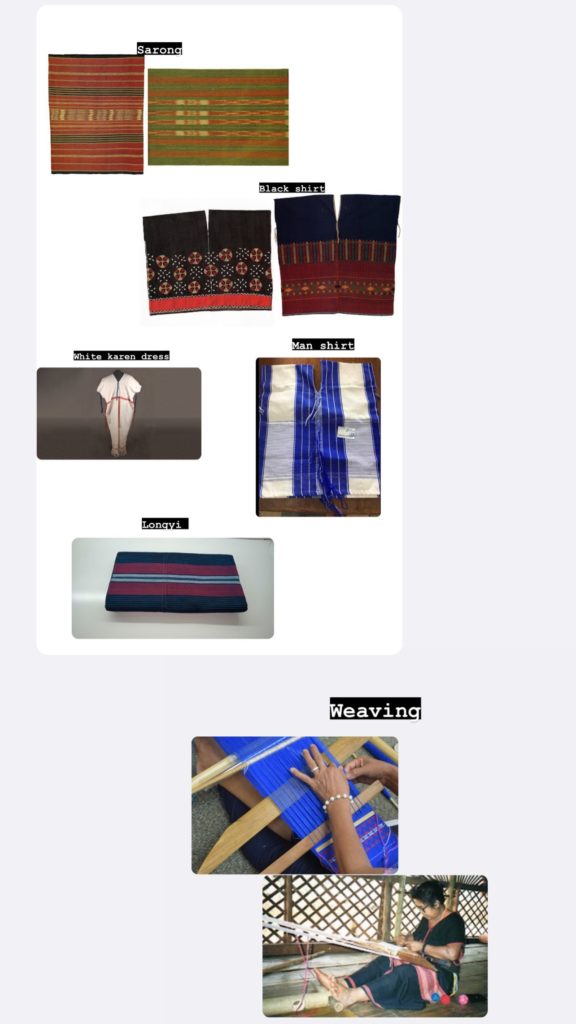
I have never been to Burma but my parents were originally from Burma. We are Karen.
Karen is the third largest ethnic group population in Myanmar. Many Karen have migrated to Thailand, settling mostly in the border of Myanmar and Thailand due to the conflict caused by the Burmese military. The conflict has been described as one of the world’s longest running civil war and the Karen nationalist have been fighting for an independent state known as Kawthoolei more than 70 years since 1949 and counting. Most of the Karen people lost their homes, families, and lives.
The Burmese army try to kill Karen people and want to erase our culture because they don’t like us. To them we are their enemy and every time when they catch our Karen people, they rip our clothing and kill us. Burmese soldiers want more territory. They want the Karen village of Kawthoolei and use violence and genocide against Karen men, women, and children to get it. If furious Burmese soldiers see our clothes, they take them all away. When they come through our villages, they rip the clothing off the lines and torch them. They disrespect our culture. The Burmese army general Shwe Maung said “In twenty years, you will only be able to find Karen people in museum.” They also tell other countries that Karen land does not exist because they fight us and take it away, since my grandpa was born.
My parents told me that wherever I go, do not forget where I came from.

Because of this conflict, my family was forced to flee to Thailand, where I was born in a refugee camp. My parents tried their hardest to put food on the table while living in Thailand, despite the fact that it was still difficult. My parents have low-wage occupations.
The difference between living in Burma and Thailand is that we have to go hungry and fear the Burmese military in Burma. But in Thailand, we never go hungry, and we never have to worry about the Burmese military pursuing us.
In Thailand, it is necessary to pay to attend school. As a result of our modest income, my parents made the decision to relocate to the United States in 2014 in order to offer a solid education for their children, as well as a healthy life choices. My parents moved to the United States as part of a special migrant worker program. They could come and sacrifice themselves for their children, so that we will grow up with wonderful knowledge instead of growing up in the jungle without education.
My future plan is to make my parents proud. I want to accomplish my goals. I will allow myself to chase my dream that I believe in. Someday, when I get old, I want to be a wise person with knowledge. I will help my Karen people that are left in my country.
Even after all we have been through, the Karen dream of having their own independent state is still flourishing. I am just a young girl but I decided I could fight back against those who want to destroy us—by preserving out traditional clothing. Even though we do not have our own country, our culture is a very crucial part of us. Culture gives us identity and helps us grow our character. Personally, our traditional clothes have a huge impact on our people and the culture as it represents who we are as a nation.
There are different types of Karen traditional clothes in many categories, such as the black Karen traditional shirt with sarong for a married woman. White Karen traditional dresses are for women who are not married. For the men, they wear a Karen traditional shirt with longyi. Karen traditional clothes are kept as a treasure because they are delightfully handmade with very good quality. The skills that Karen people have are unique. Wearing the clothing makes me feel comfortable and good. It makes me look pretty and proud of my culture. I am who I am, and I don’t have to fit in. I embrace my culture it reminds me where I came from. Karen clothing is part of Karen culture because our ancestors represent our culture and where we are from. The traditional clothing is very special gift that has passed in from our ancestors. So, we maintain these attractive clothes and pass them on another generations that lies ahead of us. As long as we do this, Karen culture survives on Earth, in defiance of our murderers.

Karen are so few; we are not very well known, nor are our traditional clothes. Women wove more Karen clothes to pass to a new generation, so it can be known permanently. We celebrate the Karen new year by wearing Karen traditional clothes. Everyone who went to Karen new year wore Karen culture clothes.
I learned that these clothes are what make me stand out; they’re what my parents always wear. My great-great grandmother always wears Karen clothes everyday. There is not a day that goes by where she isn’t wearing it. So, a way to fight back is to keep wearing Karen shirt, never stop wearing it everywhere for Karen holidays. A way to say “we are still here” is to speak up about what happen in Kawthoolei. My friends and I shared our traditional clothes with our friends of different races and teachers in Arkansas at our American school. They are unknown clothes but are the most beautiful traditional clothes, because it describes where we came from. My parents told me that wherever I go, do not forget where I came from.



